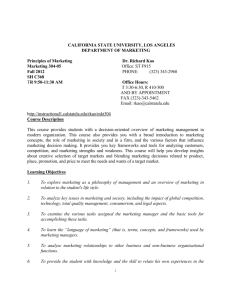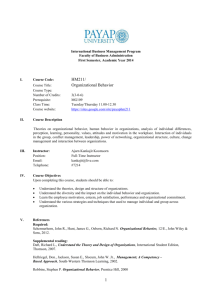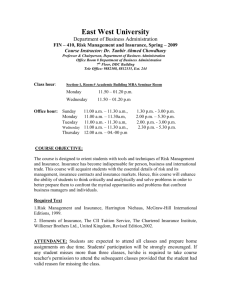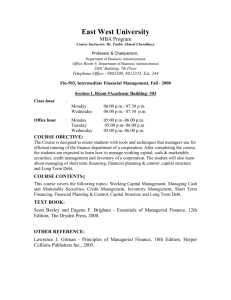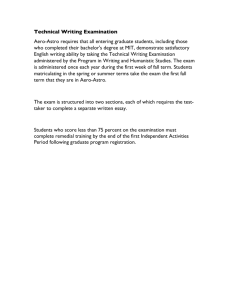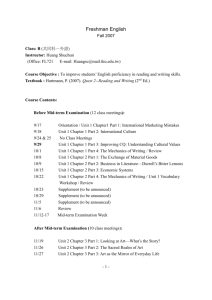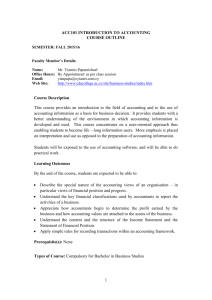Course Outline - Western Engineering
advertisement
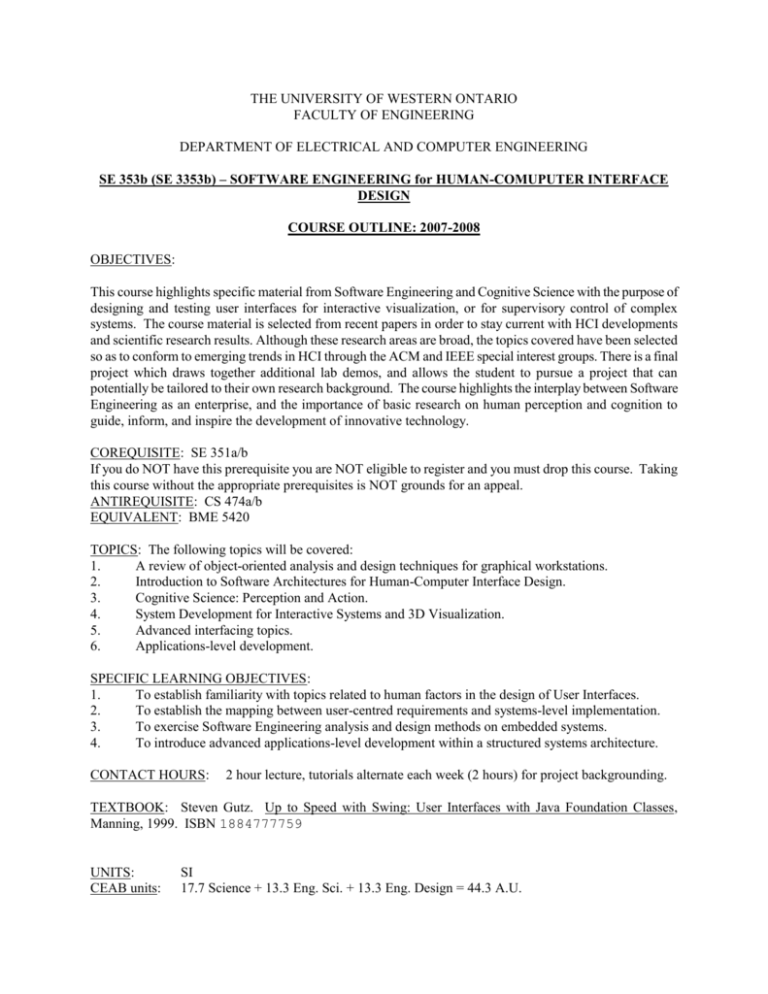
THE UNIVERSITY OF WESTERN ONTARIO FACULTY OF ENGINEERING DEPARTMENT OF ELECTRICAL AND COMPUTER ENGINEERING SE 353b (SE 3353b) – SOFTWARE ENGINEERING for HUMAN-COMUPUTER INTERFACE DESIGN COURSE OUTLINE: 2007-2008 OBJECTIVES: This course highlights specific material from Software Engineering and Cognitive Science with the purpose of designing and testing user interfaces for interactive visualization, or for supervisory control of complex systems. The course material is selected from recent papers in order to stay current with HCI developments and scientific research results. Although these research areas are broad, the topics covered have been selected so as to conform to emerging trends in HCI through the ACM and IEEE special interest groups. There is a final project which draws together additional lab demos, and allows the student to pursue a project that can potentially be tailored to their own research background. The course highlights the interplay between Software Engineering as an enterprise, and the importance of basic research on human perception and cognition to guide, inform, and inspire the development of innovative technology. COREQUISITE: SE 351a/b If you do NOT have this prerequisite you are NOT eligible to register and you must drop this course. Taking this course without the appropriate prerequisites is NOT grounds for an appeal. ANTIREQUISITE: CS 474a/b EQUIVALENT: BME 5420 TOPICS: The following topics will be covered: 1. A review of object-oriented analysis and design techniques for graphical workstations. 2. Introduction to Software Architectures for Human-Computer Interface Design. 3. Cognitive Science: Perception and Action. 4. System Development for Interactive Systems and 3D Visualization. 5. Advanced interfacing topics. 6. Applications-level development. SPECIFIC LEARNING OBJECTIVES: 1. To establish familiarity with topics related to human factors in the design of User Interfaces. 2. To establish the mapping between user-centred requirements and systems-level implementation. 3. To exercise Software Engineering analysis and design methods on embedded systems. 4. To introduce advanced applications-level development within a structured systems architecture. CONTACT HOURS: 2 hour lecture, tutorials alternate each week (2 hours) for project backgrounding. TEXTBOOK: Steven Gutz. Up to Speed with Swing: User Interfaces with Java Foundation Classes, Manning, 1999. ISBN 1884777759 UNITS: CEAB units: SI 17.7 Science + 13.3 Eng. Sci. + 13.3 Eng. Design = 44.3 A.U. 2 -2EVALUATION: The final course grade will be determined from a student’s performance on the assignments, in the mid-term examination and the final examination. The mid-term test and the final examination are limited open book. The weighting of each of these components will be as follows: Maximum Penalties* English Presentation Labs/ Projects / Assignments Mid-Term Test (2 hours) Final Examination (3 hours) 20% 25% 55% 20% 5% 5% 20% 5% 5% To obtain a passing grade in the course a mark of 50% or more must be achieved on the final examination. A final examination mark <50% will result in a final course grade of 48% or less. The examinations will be closed book – calculators will not be required, nor permitted. *In accordance with the policy of the University, the grade assigned to all written and oral work presented in English shall take into account syntax, diction, grammar and spelling. In addition, in the professional life of an engineer, the manner in which oral and written communications are presented is extremely important. An engineering student must develop these skills as an integral part of the undergraduate program. To encourage the student to do so, the grades assigned to all written and oral work will take into account all aspects of presentation including conciseness, organization, neatness, use of headings, and the preparation and use of tables and figures. All work will be marked first for content after which a penalty not to exceed the maximum shown above may be applied for lack of proficiency in English and/or presentation. The late penalty for assignments will be 10% per day or partial day. ATTENDANCE Any student who, in the opinion of the instructor is absent too frequently from class or laboratory periods in any course, will be reported to the Dean (after due warning has been given). On the recommendation of the Department concerned, and with the permission of the Dean, the student will be debarred from taking the regular examination in the course. CHEATING University policy states that cheating is a scholastic offence. The commission of a scholastic offence is attended by academic penalties which might include expulsion from the program. If you are caught cheating, there will be no second warning. MID-TERM TEST: To be announced in class. CONSULTATION: As arranged via email. COURSE INSTRUCTOR: Prof. Roy Eagleson, Ph.D.,P.Eng. December 4, 2007
